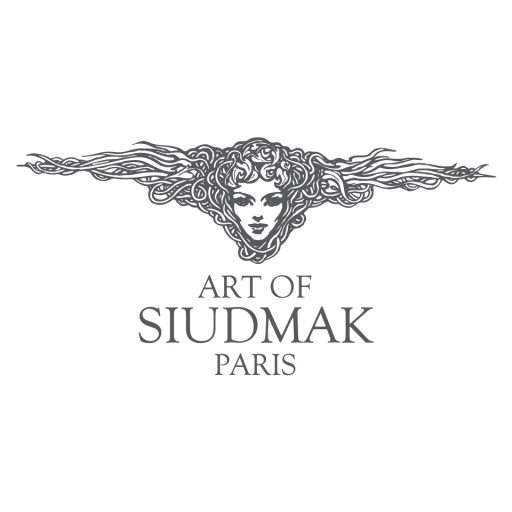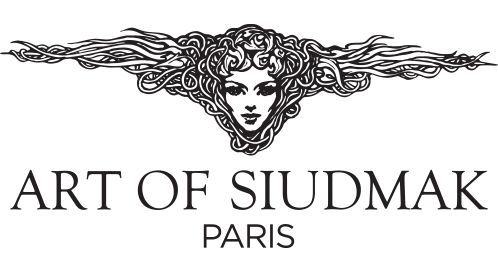Fantasy Art arose almost simultaneously with the birth of man. It appeared together with his ability to perceive the com- plexity of the world and space. Usual gestures and words were not sufficient. Only artistic gesture allowed the man to ex- press deep symbolic content. Looking more closely at murals and engravings on the walls of Lascaux, Cussac or Chauvet caves we see that these are not mere depictions of hunting, but pieces of ritual work. Reliefs and frescoes created in sanctuary-resembling, inaccessible caves are and will remain an invaluable, mysterious message for future generations of mankind.
David Larkin called the visionary art beauty, sublimity and delicacy, yet strangeness and monstrosity, everything that surrounds the reality and surpasses it beyond reality. According to Simon Watney the concept of fiction embraces everything that goes beyond the ordinariness, the unconventional situations that go beyond the norm, beyond our everyday experience, and which can not be described with terms derived from everyday language. Watney adds that realistic techniques are used throughout the whole visionary art, because it seeks substance and wants to create the appearance of reality, without which it would remain only a spiritual state or sphere of feelings.
Linking these opposing concepts lead to begetting works, which we refer to as fantastic realism. The concept of realism is traditionally perceived as the desire to present the world as it is. In art, however, the reality is always filtered through the eyes of an artist who offers us his personal vision. Therefore, fantastic art realism refers to the realm of the unreal, the exceptional state, the area of dreams. The term ‘fantastic’ means for an artist a justification of an overreality of his vision with a simulta- neous maintaining a semblance of realism. Thanks to this seeming paradox a system which goes beyond traditional artistic classifications of art history could have been developed. Fantastic realism is not a movement or style of art, but a vertical axis of Western art.
The art can be imagined as an enormous waterfall to which rivers from all sides fall into. The rivers stand for the personali- ties of art that constantly feed the vertical axis with new energy flowing from each personal vision of the world. The current is represented by eminent and extremely original artists such as: Hieronymus Bosch, Giovanni Battista Bracelli, Pieter Bruegel, Giuseppe Arcimboldo, Francisco Goya, Monsù Desiderio, Hubert Robert, William Blake, Caspar Friedrich, Gustave Moreau, Sir Joseph Noel Paton, Johann Heinrich Füssli, Max Klinger, Arnold Böcklin, Gustave Doré. Fantastic art creators include: Salvador Dalí, Réne Magritte, Paul Delvaux, Giorgio de Chirico.
Fantastic realism encompasses a space where dreams become reality. Charles Baudelaire perfectly captured this in his preface to Paradis artificiel: “Common sense tells us that the things of the earth exist only a little, and that true reality is only in dreams”. The privilege of a completely free interpretation of the fantastic works can put the viewer on the tracks the author had no inten- tion of putting him on. In such a case we are dealing with the appropriation of the symbolism of the image by the viewer who is trying to meet his individual needs. The picture becomes a mirror which emotions, associations and visions freed from the control of consciousness are reflected in. The possibilities of interpretation here are endless. Each one is discovering another, hidden in the image meaning, which will at least springboard for his own analysis if expectations are not met. It creates and enriches the relationship between the viewer and the work as well as the viewer and the artist. For me fantastic art is a reflection of how I see the world. This is often a global approach, a bird’s eye view embracing all human problems. Nearly a space vision. As we feel more than we perceive, the creator becomes the master of generated reality. He is the conductor of an orchestra that improvises constant learning of a new symphony in which contrary events, unforeseen beings, sublime beauty, dreams, daydreams and foretold destiny intertwine. The boundaries between harmony and contradiction, beauty and ugliness, peace and tumult, success and failure, admiration and contempt are blurring.
The artist is not involved in the creation of neither complex treaties nor theory. He focuses his potential on the search of his completely own, timeless artistic value. He is a careful observer of intellectual events, responds to the latest scientific discoveries, leading a unique dialogue with scientists. He challenges himself because he wants to constantly reach intellectual and artistic peaks. He follows the way of the creative suggested by his instinct. On the infinitely vast field of pseudo-reality truth and delusion together build surprising structures, giving evidence and stunning image of the possibilities of human imagination. A real depth and specific atmosphere of fantasy was perfectly characterized by William Shakespeare in The Tempest: “We are such stuff as dreams are made on; and our little life is rounded with a sleep”.

